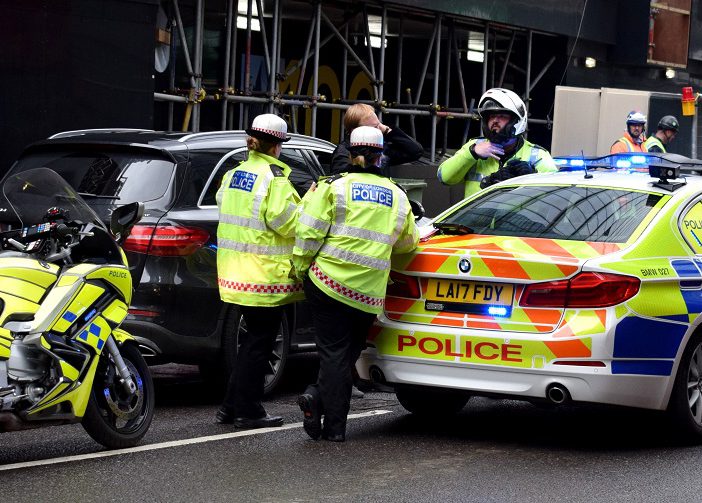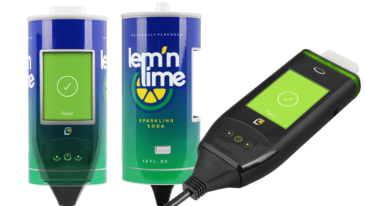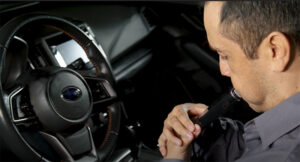
DUI Checkpoints: Are They Effective?
Sobriety checkpoints, commonly referred to as a DUI checkpoint, are a law enforcement undertaking meant to reduce instances of impaired driving that are regularly seen in most states. While most of us have seen, been through, or heard of a sobriety checkpoint being used, many of us don’t have a firm grasp on how effective they are as a tool. One question many people wonder is whether the resources being used to run a sobriety checkpoint could be better utilized some where else. This is true both outside and inside the law enforcement community, as police departments often don’t have the resources to regularly run sobriety checkpoints.
Although it may not seem like it, the use of sobriety checkpoints and their effectivenessis a topic that should concern everyone. The issues surrounding sobrietycheckpoints strike at the heart of issues surround enforcement, use of publicresources, and public safety, while also intersecting with important questionssurrounding privacy. In this article, we’ll explore what sobriety checkpointsare, whether they are effective, and how that effectiveness is measured. Whatresults is a picture of a common enforcement method against drunk driving thatis largely effective, but is flawed in some regards and experiences onlysporadic use. As we will see, one of the largest problems with sobrietycheckpoints isn’t their effectiveness in deterring drunk driving, but ratherthe fact that their cost often precludes their use.
What are Sobriety Checkpoints?
The first step towards understanding how effective are dui checkpoints is to define exactly what weare talking about. When we are speaking of a sobriety or DUI checkpoint, wearen’t referring to a traffic stop. Sobriety checkpoints are distinct fromroutine traffic stops and should be thought of as a completely differentenforcement measure. Essentially, a sobriety checkpoint occurs when policeroute all highway traffic through a collection point of police officers.Certain vehicles are usually pulled aside at random, and subjected to secondarytesting or alcohol screening. Typically, sobriety checkpoints will also requirecertain drivers to produce documents such as car registration and proof ofinsurance, and if the presence of alcohol or drugs is detected the driver willundergo a field sobriety test.
There are certain features of sobriety checkpoints that make them distinct from othertypes of enforcement methods. A traditional sobriety checkpoint is usuallyplanned ahead of time with command approval and has some sort of justification,such as a high rate of driving under the influence (DUI) arrests on a certainhighway corridor or intersection. DUI checkpoints are also unique because theyare usually announced ahead of time. Police departments will usually announce aplanned DUI checkpoint ahead of time to the community through social media andlocal newspapers. While the exact location of the sobriety checkpoint may notbe known, there is a clear intention that individuals at least know one is planned.
In addition to broadcasting the intention to operate a checkpoint ahead of time,law enforcement agencies typically include signage indicating to drivers thatthey are about to enter a checkpoint. Some areas will only conduct checkpointsin locations where drivers have ample opportunity to pull off and pursue adifferent route. While this may seem suspicious, merely avoiding a DUIcheckpoint isn’t considered probable cause to be pulled over. Most often,avoiding a checkpoint would have to be combined with other indications ofimpairment to result in a traffic stop.
There are different types of sobriety checkpoints. Traditional sobriety checkpointsare what we have described so far. These typically have a large pool of policeofficers that staff the checkpoint, and there is usually at least onesupervisor present. Traditional sobriety checkpoints will sometimes beaccompanied by a mobile breath testing facility. The second type of sobrietycheckpoint is considered a low staffing checkpoint which has many of the samecharacteristics of a traditional checkpoint, but with far fewer policeofficers. Lastly, flexible checkpoints are usually staffed by only a fewofficers, are set-up and taken down quickly, and typically occur without priornotice. Flexible sobriety checkpoints are typically geared toward creatingvisibility but without the active enforcement present in traditional and low staffing checkpoints.
Sobriety Checkpoints and Deterrence
At this point, you might be wondering why sobriety checkpoints are used. Mostpeople believe that checkpoints are primarily used as a method to apprehendpeople driving under the influence. To be sure, this is the central purpose ofthe officers that actually conduct the safety screenings at a checkpoint.However, checkpoints serve another purpose. Specifically, checkpoints are usedto deter people from drinking and driving in the first place. The deterrentfactor of checkpoints is a key component of understanding whether or notcheckpoints are effective.
To understand how sobriety checkpoints are used to deter drinking and driving fromever occurring, let’s explore some of the features of traditional checkpointsand how they translate to deterrence.
High Visibility
A traditional sobriety checkpoint is a highly visible event. This isn’t byaccident. Sobriety checkpoints are designed to be highly visible from thestart. Sobriety checkpoints are typically conducted on major highways orintersections, or areas where there have been DUI related accidents.Checkpoints are indicated by a large amount of signage upstream of thecheckpoint to let drivers know they are about to enter a checkpoint.Traditional checkpoints are also a large undertaking in terms of manpower.Checkpoints can have upwards of 20 officers manning both the primary andsecondary screening, as well as entrance and exit points and operatingspecialized equipment. They also will usually be accompanied by some type ofsupervisor. Put simply, sobriety checkpoints put a highly visible policepresence in an area where it is likely to be seen by a large number of drivers.
Advertising
If you wanted to catch someone in the act of drinking and driving in a sobrietycheckpoint, why would you advertise that you were going to conduct a checkpointahead of time? The answer is, you probably wouldn’t. One of the primary reasonswhy checkpoints aren’t used more often is cost. Most departments simply don’thave the budget to conduct sobriety checkpoints as often as they would like.The two largest sources of cost for a sobriety checkpoint are staffing them andadvertising them ahead of time. Most checkpoints are advertised using a varietyof channels, including some paid advertising channels. This means that lawenforcement wants everyone to know about a checkpoint ahead of time, so much sothat they are willing to actually pay to have the message spread. The fact thatpolice are broadcasting the planned use of a checkpoint at a predetermined datein the future indicates that while arrests might be made as a result of the checkpoint,they aren’t the primary purpose.
Avoidance
Most traditional sobriety checkpoints are advertised ahead of time, clearly markedwith signage, and in some cases can only be conducted in areas where driverscan choose an alternate route. Even when an alternate route isn’t explicitlyprovided, drivers may still turn around and choose to go around the checkpointprovided they would legally be able to perform a u-turn anyways. Given thesefacts, it can be concluded that traditional DUI checkpoints are meant to beavoidable, at least to some degree. A driver may see an advertisement about thecheckpoint ahead of time and choose to be off the road that night, or they maysee signage indicating a checkpoint is ahead and choose a different route. Thefact that DUI checkpoints are intentionally avoidable indicates that drunkdriving arrests aren’t the primary purpose of the checkpoint itself.
Are They Effective?
Now that we understand what DUI checkpoints are, as well some of the ways that DUIcheckpoints are structured to deter drunk driving, let’s explore how are dui checkpointseffective. Determining whether DUI checkpoints are effective is complex,contested, and often misunderstood. Most people that aren’t familiar withsobriety checkpoints would gauge effectiveness by looking at the number ofsuccessful arrests for drunk driving that are the direct result of thecheckpoint. Most law enforcement agencies publish the statistics of thecheckpoint after the fact, making this fairly easy to check. However, a focuson arrests misses the true point of a checkpoint from the beginning.
The reality is, sobriety checkpoints are conducted as a means to deter drunk drivingfrom happening. What law enforcement has found is that in order for deterrentefforts to be effective in combatting drunk driving, they must increase theperceived risk of arrest. Put another way, people that don’t there is a highlikelihood of getting caught are more likely to drink and drive. Sobrietycheckpoints, along with other highly visible activities like saturation patrolswhich greatly increase the number of patrolling police officers on the roads,are one way that law enforcement agencies have attempted to increase theperceived risk of arrest for drunk driving. Publishing instances where asobriety checkpoint resulted in an arrest for driving under the influence isalso used to heighten awareness of the risk of drinking and driving.
Within the context of increasing the perceived risk of arrest, are sobrietycheckpoints considered effective? Most studies have indicated that they are. Avariety of studies from the 1980’s when sobriety checkpoints first began to seeuse demonstrated that sobriety checkpoints reduced alcohol-related crashes.These conclusions have been substantiated by studies during the 1990s and early2000s as well. An analysis by the Center for Disease Control (CDC) found that sobrietycheckpoints reduced alcohol-related crashed by 17%, and all crashes by 10-15%.Interestingly, one study found that impairment decreased significantly in theareas around a checkpoint while remaining largely unchanged in areas furtheraway from checkpoints.
While sobriety checkpoints are mostly regarded as effective in reducingalcohol-related crashes and are primarily used in conjunction with otherdeterrence methods, not all people agree that sobriety checkpoints are the bestuse of resources. In the Supreme Court case that ultimately decided thelegality of sobriety checkpoints in the United States, Michigan Dep’t of State Police v. Sitz, Justice Stevens wrote inhis dissenting opinion that the findings of the lower court showed that theoverall effect of sobriety checkpoints was small, if not negative, and that theresources used to carry out a sobriety checkpoint would be more effective ifput to use in other deterrent activities. Put another way, Stevens argued thatthe twenty or so officers used to conduct a sobriety checkpoint would be moreeffective at deterring drunk driving if they were used in standard enforcement efforts.
The dissenting opinion by Justice Stevens highlights the difficulty in determiningthe true effectiveness of DUI checkpoints. While numerous studies havedemonstrated that sobriety checkpoints are effective at reducingalcohol-related crimes when examined in isolation, it is largely impossible todetermine if they are more effective than if those same resources had beenapplied to other enforcement strategies. Many law enforcement agencies chooseto use sobriety checkpoints in conjunction with other enforcement strategies,such as saturation patrols and community education and outreach events.
Despite the important role that many law enforcement agencies see for sobrietycheckpoints, they tend to be too costly to conduct regularly. Many agencieshave begun exploring flexible checkpoints, where a few officers make theappearance of setting up a checkpoint in the hopes of deterring drunk driving.These checkpoints have also been shown to be effective because they capitalizeon the effectiveness of a highly visible police presence in deterring drunkdriving. However, these flexible checkpoints notably lack any real effort atscreening drivers.
The reality is that sobriety checkpoints are most likely here to stay. Althoughthey are not used in all states, when they are used they have been shown to beeffective at alcohol-related crashes. Interestingly, sobriety checkpoints havealso been shown to reduce crashes of all types. Sobriety checkpoints willcontinue to see use because they are one part of a comprehensive program toreduce injuries, accidents, and fatalities associated with impaired driving.


